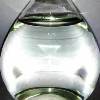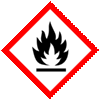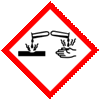Search for the supplies that you need here:
DMF Support and Documentations Available | |
 WHO-GMP Certified Good Manufacturing Practice Certified by World Health Organization |  WC, Written Confirmation for Active Substance to be imported into European Union (EU). |
Glacial Acetic Acid SDS of Suppliers
Anmol Chemicals is a manufacturer supplier exporter of Glacial Acetic Acid and it offers materials as per IP BP EP Ph Eur USP NF JP FCC Food Grade as per the the latest monograph at best prices. Anmol Chemicals Group, established in 1976, is the pioneer manufacturer of Specialty Chemicals, Pharmaceutical Excipients, Some API, Food Chemicals in India. Anmol Chemicals Group has manufacturing facilities spread across Western India, representatives in Houston, Chicago USA and Dubai, UAE. We also have toll manufacturing units for processing chemicals in a few countries around the world. We make IP, BP, EP, USP, NF, Ph. Eur., JP, FCC or Food Grade, Analytical Reagent Grade, LR or Laboratory Reagent Grades and Pure Grades of various chemicals. All our items are analyzed to meet the required standards. We can supply the product in grams for your laboratory trial and in tons for your plant scale jobs.
We manufacture Bulk Drugs / API, Excipients, Pharmaceuticals (IP BP USP NF Ph Eur EP JP), Specialty Chemicals (Pure/Reagent), Mineral Fortifiers (FCC). Our manufacturing facility is FDA approved and GLP, cGMP, ISO9001, ISO14001, ISO/IEC 17025, ISO22000, FSSC 22000, ISO45001, FSSAI, Kosher, HALAL, COPP, WHO-GMP certified and Written Confirmation (WC) is available. Solid materials can be customized for particle size, shape, and bulk density. We observe WHO Good Manufacturing Practices and Good Laboratory Practices. We are a government-recognized STAR Export House and "Authorised Economic Operator (AEO)" per Indian Customs.
All technical documents and DMF support available.
Glacial Acetic Acid Specifications of Manufacturers

Glacial Acetic Acid SDS, Safety Data Sheet
MSDS Sheet, Material Safety Data Sheet
Section 1 - Chemical Product and Company Identification
Product Name & Other Names: Glacial Acetic Acid or Acetic Acid or Ethanoic acid or Ethylic acid or Methanecarboxylic acid or Vinegar.
CAS#: 64-19-7
EINECS EC Number: 200-580-7
Molecular Formula: CH3COOH
Molecular Weight: 60.05
Relevant uses and uses advised against (if any): Industrial Manufacturing.
Suppliers: As per letterhead.
Section 2 - Hazards Identification
GHS, Globally Harmonized System Classification in accordance with 29 CFR 1910
Classification according to Regulation (EC) No 1272/2008
Flammable liquids (Category 3) H227
Skin corrosion/irritation (Category 1A, B, C) H314
Acute aquatic toxicity (Category 3) H402
Labeling according to GHS & Regulation (EC) No 1272/2008
GHS Label Elements  Combustible Liquid |
GHS Label Elements  Corrosive |
Signal Words (GHS-US): Danger
Hazard statements (GHS-US):
H227: Combustible liquid.
H314: Causes severe skin burns and eye damage.
H402: Harmful to aquatic life.
Precautionary statements (GHS-US):
P210: Keep away from heat, sparks, open flames, hot surfaces. - No smoking.
P260: Do not breathe mist, vapors, spray.
P264: Wash exposed skin thoroughly after handling.
P280: Wear protective clothing, protective gloves, eye protection, face protection.
P301+P330+P331: IF SWALLOWED: rinse mouth. Do NOT induce vomiting.
P303+P361+P353: IF ON SKIN (or hair): Remove/Take off immediately all contaminated clothing. Rinse skin with water/shower.
P304+P340: IF INHALED: remove victim to fresh air and keep at rest in a position comfortable for breathing.
P305+P351+P338: If in eyes: Rinse cautiously with water for several minutes. Remove contact lenses, if present and easy to do. Continue rinsing.
P314: Get Medical advice/attention if you feel unwell.
P337+P313: If eye irritation persists: Get medical advice/ attention.
P370+P378: In case of fire: Use carbon dioxide (CO2), powder, alcohol-resistant foam for extinction.
P403+P235: Store in a well-ventilated place. Keep cool.
P405: Store locked up.
P273: Avoid release to the environment.
P501: Dispose of contents/container to comply with local, state, and federal regulations.
Classification according to EU Directives 67/548/EEC or 1999/45/EC:
Hazard Symbol:
C Corrosive
Risk Phrases:
R10 Flammable.
R35 Causes severe burns.
R41 Risk of serious damage to eyes.
Section 3 - Composition/Information on Ingredients
Product Name & Other Names: Glacial Acetic Acid or Acetic Acid or Ethanoic acid or Ethylic acid or Methanecarboxylic acid or Vinegar.
CAS#: 64-19-7
EINECS EC Number: 200-580-7
Percent: 99-100% on dry basis. Dilution is always with water.
Section 4 - First Aid Measures
Always consult a physician after the first aid is given.
Eyes: Immediately flush eyes with plenty of water for at least 15 minutes, occasionally lifting the upper and lower eyelids. Get medical aid. Do NOT allow victim to rub or keep eyes closed.
Skin: Flush skin with plenty of soap and water for at least 15 minutes while removing contaminated clothing and shoes. Get medical aid if irritation develops or persists. Wash clothing before reuse.
Ingestion: Do NOT induce vomiting. If victim is conscious and alert, give 2-4 cupfuls of milk or water. Never give anything by mouth to an unconscious person. Get medical aid.
Inhalation: Remove from exposure to fresh air immediately. If breathing is difficult, give oxygen. Get medical aid. Do NOT use mouth-to-mouth resuscitation. If breathing has ceased apply artificial respiration using oxygen and a suitable mechanical device such as a bag and a mask.
Notes to Physician: Treat symptomatically and supportively.
Section 5 - Fire Fighting Measures
General Information: As in any fire, wear a self-contained breathing apparatus in pressure-demand, MSHA/NIOSH (approved or equivalent), and full protective gear. During a fire, irritating and highly toxic gases may be generated by thermal decomposition or combustion.
Flammability: Flammable. Explosive in presence of oxidizing materials.
Flash Point: 40C 104F
Auto Ignition Temperature: 463C 865F
Extinguishing Media: Use DRY chemical powder, alcohol foam, water spray or fog. Cool containing vessels with water jet to prevent pressure build-up, auto-ignition, or explosion.
Section 6 - Accidental Release Measures
Personal precautions, protective equipment, and emergency procedures: Ventilate area of leak or spill. Avoid breathing dust/fumes/gas/mist/vapors/spray. Use individual protective equipment (waterproof boots, suitable protective clothing, safety glasses, etc.). Restrict unprotected personnel from the area. Prevent any contact with hot surfaces. Do not approach facing the wind. Do not touch the spilled material.
Environmental precautions: Do not let the product enter drains, soil, or water sources.
Methods and materials used for containment Cleanup procedures and Storage: Contain spilled material. Cover with an inert, non-combustible absorbent material, (e.g. sand, earth, diatomaceous earth, vermiculite). Vacuum or sweep-up and remove to an approved disposal container. Finish cleaning by spreading water on the contaminated surface and allow to evacuate as per law. Remove all ignition sources and ventilate area. Neutralize with sodium bicarbonate or calcium hydroxide or dry soda ash or calcium carbonate and deposit in a sealed bag or container. Use water spray to dilute spill to a non-flammable mixture. Remove all sources of ignition. Use a spark-proof tool. Provide ventilation.
Section 7 - Handling and Storage
Precautions for safe handling: Apply according to good manufacturing and industrial hygiene practices. Ensure proper ventilation. In case of insufficient ventilation, wear suitable respiratory equipment. Wash thoroughly after handling. Do not drink, eat, or smoke while handling. Avoid contact with skin, eyes, and clothing. Minimize dust generation. Avoid breathing dust/fumes/gas/mist/vapors/spray. Avoid contact with eyes, skin, and clothing. Keep container tightly closed. Avoid ingestion and inhalation. Use individual protective equipment (waterproof boots, suitable protective clothing, safety glasses, etc.). Prevent any contact with hot surfaces.
Conditions for safe storage, including any incompatibilities: Store in cool, dry, and ventilated area away from heat sources and protected from sunlight in tightly closed original container. Keep air contact to a minimum. Store protected from heat, sparks and ignition sources and incompatible materials. Avoid contact with skin and eyes. Avoid inhalation of dust/mist/vapor. Do not store with incompatible materials like strong oxidizing agents, strong alkalis, and metals. Store protected from heat and flames.
Section 8 - Exposure Controls, Personal Protection
Airborne Exposure Limits: Airborne Exposure Limits:
OSHA Permissible Exposure Limit (PEL): 10 ppm (TWA).
ACGIH Threshold Limit Value (TLV): 10 ppm (TWA); 15 ppm (STEL).
NIOSH 10ppm TWA; 25 mg/m3 TWA 50ppm IDLH
Ventilation System: A system of local and/or general exhaust is recommended to keep employee exposures as low as possible. Local exhaust ventilation is generally preferred because it can control the emissions of the contaminant at its source, preventing dispersion of it into the general work area. Please refer to the ACGIH document, Industrial Ventilation, A Manual of Recommended Practices, most recent edition, for details.
Personal Respirators (NIOSH Approved): For conditions of use where exposure to dust or mist is apparent and engineering controls are not feasible, a particulate respirator (NIOSH type N95 or better filters) may be worn. If oil particles (e.g. lubricants, cutting fluids, glycerin, etc.) are present, use a NIOSH type R or P filter. For emergencies or instances where the exposure levels are not known, use a full-face positive-pressure, air-supplied respirator. WARNING: Air-purifying respirators do not protect workers in oxygen-deficient atmospheres.
Skin Protection: Wear impervious protective clothing, including boots, gloves, lab coat, apron or coveralls, as appropriate, to prevent skin contact.
Eye Protection: Use chemical safety goggles and/or full face shield where dusting or splashing of solutions is possible. Maintain eye wash fountain and quick-drench facilities in work area of Acetic acid.
Section 9 - Physical and Chemical Properties
Appearance: Clear Liquid
Odor: Vinegar odor
Odor threshold: Not available.
pH: 2 for 1% solution, 2.4 (1.0M solution)
Relative density: around 1.05
Boiling Point: 118C (244.5F)
Melting Point: 16.6C (61.9F).
Flash point: Not available.
Auto-ignition temperature: Not available.
Decomposition temperature: Not available.
Upper/lower flammability or explosive limits: Not available.
Vapor pressure: Not available.
Vapor density: Not available.
Evaporation rate: Not available.
Flammability (solid, gas): Not available.
Partition coefficient: n-octanol/water: Not available.
Solubility: Soluble in water
Viscosity: Not available.
Molecular Formula:C2H4O2
Molecular Weight:60.05
Section 10 - Stability and Reactivity
Chemical Stability: Stable under normal temperatures and pressures. It is hygroscopic.
Conditions to Avoid: Incompatible materials, dust generation, moisture, exposure to heat, spark, moist air or water.
Incompatibilities with Other Materials: Oxidizing agents, strong alkalis and metals.
Hazardous Decomposition Products: Carbon monoxide, irritating and toxic fumes and gases, carbon dioxide.
Hazardous Polymerization: Will not occur.
Section 11 - Toxicological Information
Acute oral toxicity (LD50): 3310 mg/kg [Rat].
Acute dermal toxicity (LD50): 1060 mg/kg [Rabbit].
Acute toxicity of the vapor (LC50): 5620 1 hours [Mouse].
LC50 Inhalation - rat - 4 h - 11.4 mg/l 4 hours
Carcinogenicity: No component of this product present at levels greater than or equal to 0.1% is identified as possible or confirmed human carcinogen by IARC, ACGIH, OSHA and NTP.
Mutagenic Effects: Not available.
Teratogenic Effects: Not available.
Developmental Toxicity: Not available.
Reproductive Effects: No information available.
Section 12 - Ecological Information
Persistence and Degradability: The material will readily biodegrade.
Mobility: Mobile due to water solubility
Bioaccumulation/ Accumulation: Unlikely to bioaccumulate
Results of PBT and vPvB assessment: No data available for assessment.
Toxicity: (LC50): 423 mg/l 24 hours [Fish (Goldfish)]. 88 ppm 96 hours [Fish (fathead minnow)]. 75 ppm 96 hours [Fish (bluegill sunfish)]. >100 ppm - 96 hours [Daphnia].
Section 13 - Disposal Considerations
Whatever cannot be saved for recovery or recycling should be managed in an appropriate and approved waste disposal facility. Processing use or contamination of this product may change the waste management options. State and local disposal regulations may differ from federal disposal regulations. Dispose of container of Acetic acid and unused contents in accordance with local requirements.
Section 14 - Transport Information
DOT (USA) and ADR/RID
UN number: 2789
Class: 8 (3)
Packing group: II
Proper shipping name: Acetic acid, glacial
Reportable Quantity (RQ): 5000 lbs
Marine pollutant: No
Poison Inhalation Hazard: No
IMDG
UN number: 2789
Class: 8 (3)
Packing group: II
Proper shipping name: Acetic acid, glacial
Reportable Quantity (RQ): 5000 lbs
Marine pollutant: No
IATA
UN number: 2789
Class: 8 (3)
Packing group: II
Proper shipping name: Acetic acid, glacial.
Section 15 - Regulatory Information
USA:
OSHA: Hazardous by definition of Hazard Communication Standard (29 CFR 1910.1200).
Section 313: No chemicals are reportable under Section 313.
SARA 311/312 Hazards: Acute Health Hazard, Chronic Health Hazard. See section 2.
California Prop. 65 Components: This product does not contain any chemicals known to State of California to cause cancer, birth defects, or any other reproductive harm.
Section 16 - Additional Information
European Labeling in Accordance with EC Directives:
H227 = Combustible liquid.
H314 = Causes severe skin burns and eye damage.
H402 = Harmful to aquatic life.
Classification according to EU Directives 67/548/EEC or 1999/45/EC:
Hazard Symbol:
C Corrosive
Risk Phrases:
R10 Flammable.
R35 Causes severe burns.
R41 Risk of serious damage to eyes.
DISCLAIMER: The information and recommendations set forth herein are presented in good faith and believed correct as of the date hereof. It is compiled from various sources and it is not necessarily all inclusive nor fully adequate in every circumstance. In addition, these suggestions should not be confused with nor followed in violation of applicable laws, regulations, rules or insurance requirements applicable. This MSDS sheet is intended only as a guide to the appropriate precautionary handling of the material by a properly trained person using this product. Individuals receiving the information must exercise their independent judgment in determining its appropriateness for a particular purpose.



Manufacturer Supplier Exporter
ANMOL CHEMICALS Private Limited
Representatives in Houston, Chicago and New York, USA
TEL: (OFF) +91 22 23726950, +91 22 23774610, +91 22 23723564
Taloja Navi Mumbai, Banglore, INDIA
e-mail: info@anmol.org
Copyright and Usual Disclaimer is Applicable
Last updated 14-oct-25
Exporters to USA, Canada, UAE, Kuwait, Qatar, Gautemala, Tunisia, Europe, South Africa, Bangladesh, Sri Lanka, Tanzania, Kenya, Egypt, Iraq, Turkey, Israel, Vietnam, Nigeria, Uganda, Brazil, Chile, Argentina, Dubai, UAE, Saudi Arabia, Cameroon, Mexico, Brazil, Chile, Argentina, Korea, Thailand, Malaysia, Indonesia, Jakarta, Australia, China, Germany, France, etc.
Representatives in New York, Houston - Texas, Chicago - Illinois, Los Angeles.
All products are Sold for Industrial and Laboratory Use only.
Fast Selling IP BP Ph Eur EP USP NF JP Analytical Reagent FCC Food Grades of Chemicals by Anmol Chemicals
Ammonium Persulfate --- Acetic Acid Glacial --- Aluminum Chloride --- Ammonium bicarbonate --- Benzyl Alcohol --- Butylated Hydroxyanisole --- Butylated Hydroxytoluene --- Boric Acid --- Calcium Butyrate --- Calcium Chloride --- Calcium Hydroxide --- Calcium Lactobionate --- Calcium Saccharate --- Carbamide Peroxide --- Calcium Oxide --- Calcium Sulfate --- Chromic Chloride --- Fumaric Acid --- Magnesium Butyrate --- Magnesium Chloride --- Magnesium Sulfate --- Malic Acid --- Maleic Acid --- Manganese Chloride --- Manganese Sulfate --- Octyldodecanol --- Oleic acid --- Phenylethyl Alcohol --- Propylene Carbonate --- Potassium Hydroxide Pellets --- Potassium Alum --- Selenious Acid --- Sodium Acetate --- Sodium Bromate --- Sodium Selenite --- Sodium Perborate --- Sodium Hydroxide --- Sodium Sulphate --- Sodium Sulfide --- Sodium Thiosulfate --- Urea --- Zinc Chloride --- Zinc Sulphate ---


















